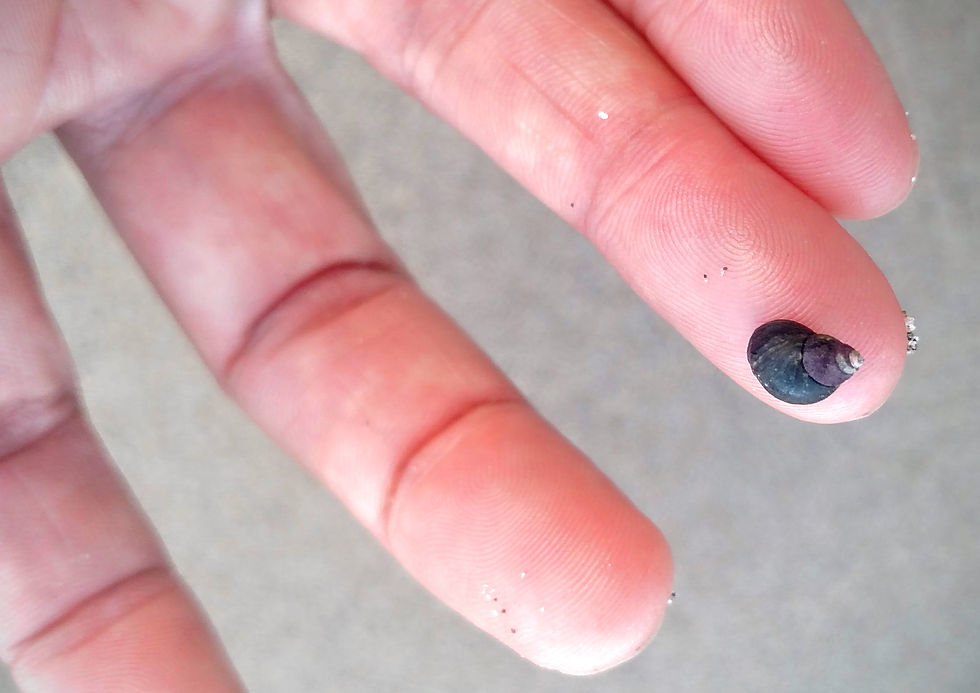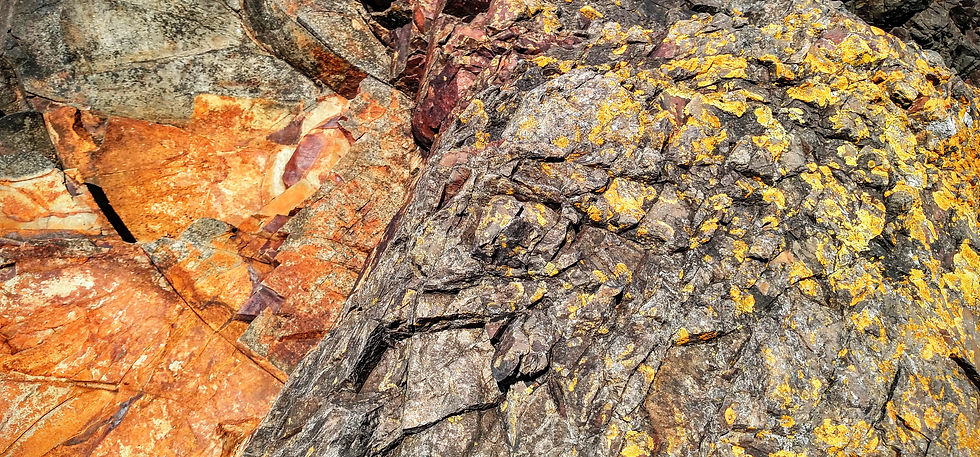Deep Time in the Tidelands
- Stephen Grace
- Oct 6, 2016
- 3 min read
—Stephen Jay Gould, Time's Arrow, Time's Cycle

By scraping algae from rocks with tiny, file-like teeth, periwinkle snails, Littorina spp., can deepen tidepools almost half an inch in sixteen years. Imagining a small mollusk as an agent of geologic change primes us to consider planetary processes that creep at a snail's pace across titanic spans of time.
Dramatic headlands and sea stacks along Oregon's North Coast were born some 15 million years ago when the Yellowstone hotspot was located near where Oregon, Idaho and Nevada now meet. Rivers of liquid fire flowed from this volcanic cauldron toward the coast, cooling into basalt rocks so hard they resisted the relentless pummeling of surf, while soft sedimentary stones made of mud and sand melted into the sea. Over millions of years, an oceanic plate and a continental plate collided, burying ocean floor deep in the Earth and lifting submerged lava rocks above the water. Weather and waves sculpted the coastline through countless centuries, and periwinkle snails abraded tidepools millimeter by millimeter across millennia.

The vast geologic history that shaped our planet is known as deep time. The deep time of rock layers deposited on Earth over 4.5 billion years can be as difficult to grasp as the distances that define deep space, where light from the early universe, three times older than our planet, is just now reaching our eyes.
How do we make sense of this scale? We intuitively grasp the contours of a century. But the terrain of a billion years baffles our brains, which evolved to comprehend the scale that frames a human lifetime. Fortunately, nature has also equipped our brains with a key to unlock the concrete prison of our cognition: the ability to think abstractly. Metaphors free our imagination to help place our lives, and the story of our species, in geologic time.
The term deep time was coined by John McPhee in his 1981 book Basin and Range. McPhee wrote, "Consider the earth’s history as the old measure of the English yard, the distance from the king’s nose to the tip of his outstretched hand. One stroke of a nail file on his middle finger erases human history.”

Waves scouring headlands; snails reshaping rocks: Details of incremental change in the intertidal zone prime our minds to tackle the difficult truth of deep time. The history of our species is to planetary history what the thickness of an algal film is to a towering block of basalt. And algae was grazed by snails long before humans appeared on the scene, before mammals evolved, even before sea creatures crawled onto land.
Like all other animal species, periwinkle snails are the product of some three billion years of evolutionary change. Somewhere between 700 million and 1 billion years ago, the animal kingdom arose from single-celled protists. Cambrian rocks half a billion years old hold fossils from gastropods, the class of mollusks that includes snails. Snails emerged from the ocean and evolved into species adapted to freshwater and land about a quarter of a billion years ago—that's more than 3 million human lifetimes ago. Imagine each step you take represents a human lifetime. Walk for 1,500 miles: that's how long snails have been crawling on land. Double that distance: that's how long ago molluscan ancestors of snails moved through the world's oceans.
Perhaps periwinkles will continue evolving into new species adapted to dry land. Or maybe they will remain at the ocean’s edge, where the tides have alternately covered and exposed these creatures throughout the ages. Maybe periwinkles will continue to graze algae in the intertidal zone long after the Homo sapiens chapter of Earth’s long story has come to a close.

A patient tidepooler witnesses surprising displays of speed. A black turban snail flees for its life when it senses a sea star nearby. A sculpin rises from its sandy lair to snatch prey with the rapidity of a striking snake. A hermit crab changes homes by crawling from an old shell into a new shell so quickly the switch seems an illusion. But at the ocean's edge, speed is the exception, slowness the rule.
The tidelands provide windows of slowness through which we can peer. The biologic slowness of a snail scraping algae from rocks shades into the geologic slowness of a coastline transformed across eons. And a changing coast challenges species to adapt to new conditions as time unspools across a void too vast for us to truly grasp. To gaze into a tidepool is to confront the dizzying concept of deep time.




































Comentários